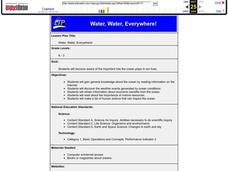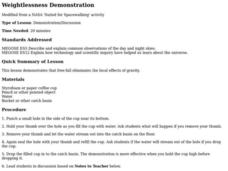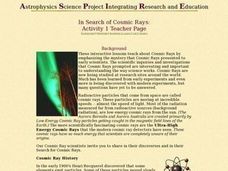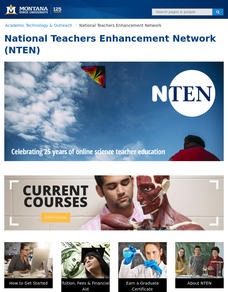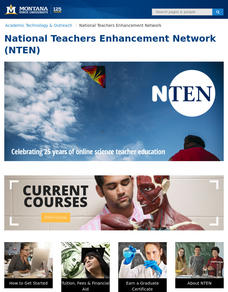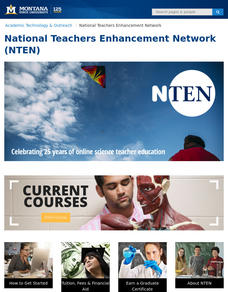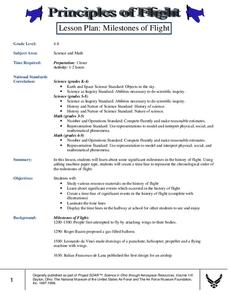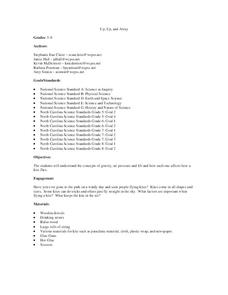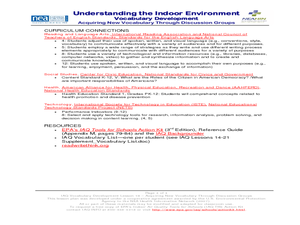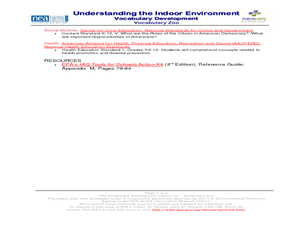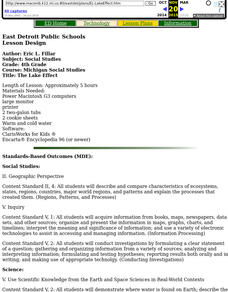Curated OER
Water, Water, Everywhere!
Students become aware of the important role the ocean plays in our lives. Students will gain general knowledge about the ocean by reading information on the Internet. They discover the weather events generated by ocean conditions.
Curated OER
How Do We Forecast Weather?
Third graders investigate how scientists collect weather data in order to forecast the weather. They work in small groups in order to research one type of weather technology such as, satellite images, radar, surface observations, or...
Curated OER
Frozen Water Before? I'm Sure You Have; But I Bed You've Never Frozen Salt Water! Water!!
Students examine what happens to salt water when it freezes. In groups, they measure density and salt concentrations in different samples of water and record its freezing time. They discuss the relationship between water density and...
Curated OER
Where Have All the Road Salts Gone, Long Time Migrating
Young scholars examine what happens to road salt after it is applied to the road during a storm. In groups, they collect their samples using a conductivity meter and enter their data into a database. They analyze and discuss the data...
Curated OER
The Magnetic Sun
Students follow steps to build a simple version of a magnetometer, an instrument capable of detecting areas of strong magnetic field. Students use the magnetometer to investigate models of the Sun and examine images of the Sun.
Curated OER
Geographic Information Systems
Young scholars examine the concept of geographic information systems (GIS) and its basic components. They explore an application program using GIS technology and list the various uses for GIS.
Curated OER
Weightlessness Demonstration
Students investigate gravity. In this weightless lesson students complete a lab activity about how a free fall might effect how one perceives gravity.
Curated OER
Geologic Time: Relative and Absolute Dating
High schoolers investigate relative and absolute dating; determine the difference between the two dating systems; and apply this knowledge by creating a geologic timetable of their own.
Curated OER
Worms in a Bottle
Students gain a better understanding of the worm and its role in the recycling of organic materials into simpler forms by constructing worm bottles and observing for 60 to 90 days.
Curated OER
In Search of Cosmic Rays
Middle schoolers compare rates to altitude. They conduct a class discussion about the results.
Curated OER
The Water Cycle
Students create an "animated" water cycle wheel that illustrates where water comes from and where it goes.
Curated OER
Do Human Practices Affect Water Quality?
Learners determine if human practices have any noticeable effects on the quality of stream life as measured by the presence of certain macroinvertebrates. They collect, preserve and identify macroinvertibrate samples and quantify the data.
Curated OER
Life in Streams and Ponds
Students collect microorganisms, demonstrate correct laboratory/Gram stain procedure, and design and construct tables to organize data.
Curated OER
An Investigation into Effects of Rhizobium Soil Bacteria on Nitrogen Availability
Students identify the control and the variables in the experiment. They describe the growth of plants with and without nitrogen fixing bacteria, then name the bacterium responsible for making nitrogen available to the plant.
Curated OER
Physical Habitat of a Stream
Students measure in metric units and use a stopwatch, calculator. They collect data with minimal instructions after the initial pre-activity briefing, then record data in the data sheets provided.
Curated OER
The Effect of Moisture on Soil Temperature
Young scholars analyze the relationship between soil moisture and its effect on soil temperature.
Curated OER
Milestones of Flight
Learners identify significant milestones in the history of flight. In this aviation history lesson plan, students study various resource materials and construct timelines of significant achievements.
Curated OER
Up, Up and Away
Tenth graders experiment with gravity and air pressure. In this geometry lesson, 10th graders build their own kits and fly it. They investigate the questions: what keeps a kite in the air and what are some important factors when flying a...
Curated OER
Keep Your Eye on the Sky
Students examine the different types of satellites, cloud formations and weather patterns. In this weather lesson students use the Internet to research weather satellites, then write an article and create graphs.
Curated OER
Trends of Snow Cover and Temperature in Alaska
Students compare NASA satellite data observations with student surface measurements of snow cover and temperature. They practice data collection, data correlations, and making scientific predictions.
Curated OER
Understanding the Indoor Environment
Students create and deliver speeches about why their school should have an Indoor Air Quality team. In this speeches lesson plan, students make presentations to school board members about having an IAQ team.
Curated OER
Understanding the Indoor Environment: Vocabulary Development
Pupils acquire new vocabulary by reading an assigned text and determining the meanings of unfamiliar words. In this vocabulary development lesson, students acquire strategies to use in a small group as they decode meanings of...
Curated OER
Vocabulary Development Vocabulary Zoo
Students practice their vocabulary skills. In this vocabulary skills lesson, students recall vocabulary words regarding indoor air quality.
Curated OER
The Lake Effect
Fourth graders conduct an experiment demonstrating the effects of water and air temperature on precipitation. They create graphs demonstrating their findings using Claris Works for Kids.


